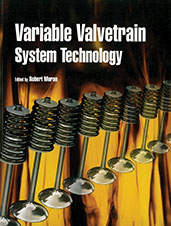Book

Variable Valvetrain System Technology
2006-03-14
This combination of 27 papers covers a decade of technical information reviewing the wide-range of approaches to Variable Valve Actuation (VVA). Each approach has unique benefits and a range of applications. These papers present a balanced view of the progress and challenges associated with VVA technology. Fuel economy and reduced emissions continue to be large factors in engine technology. Therefore the continued development of VVA will become necessary on virtually all gasoline engines, and must be adopted on diesel engines. The benefits achieved with the applications of this technology include: fuel economy, reduced emissions, improved power, performance, reliability and durability.
